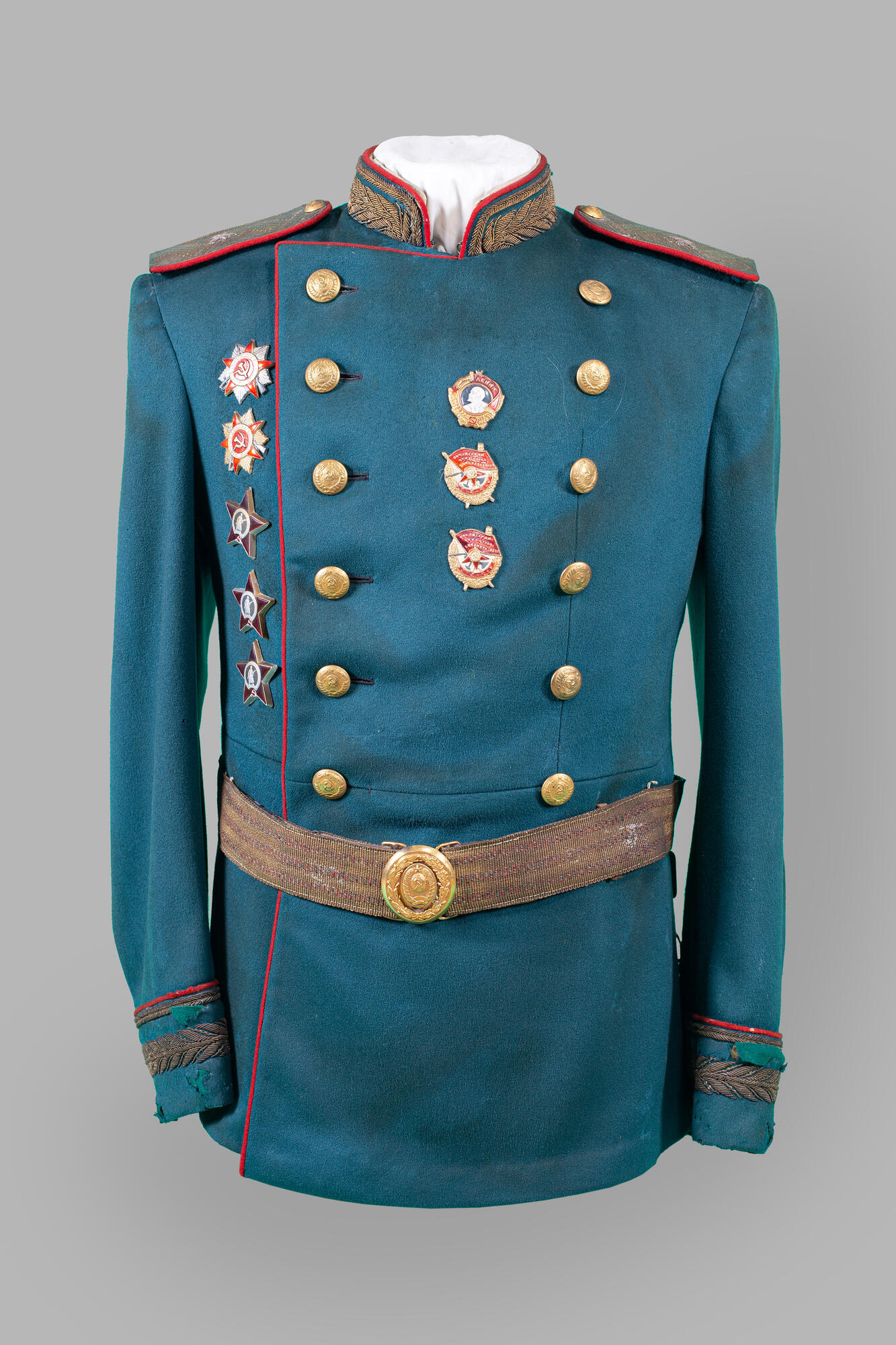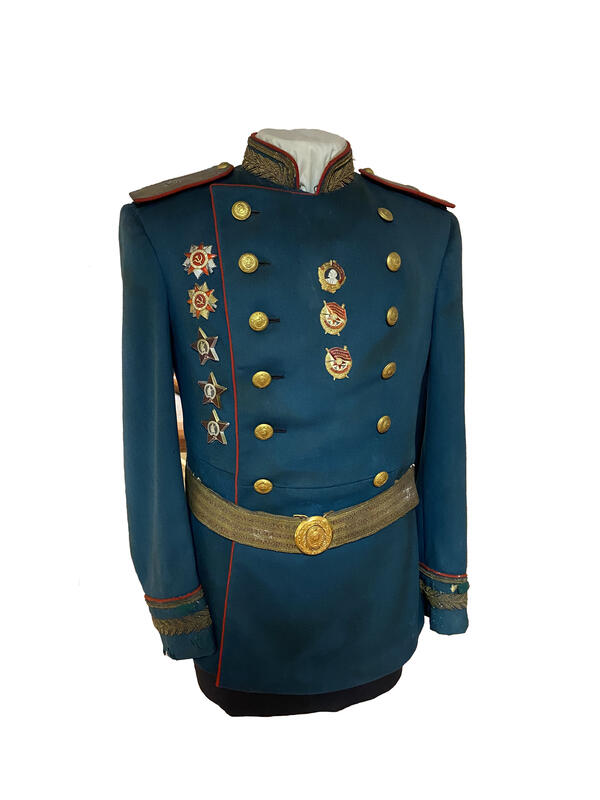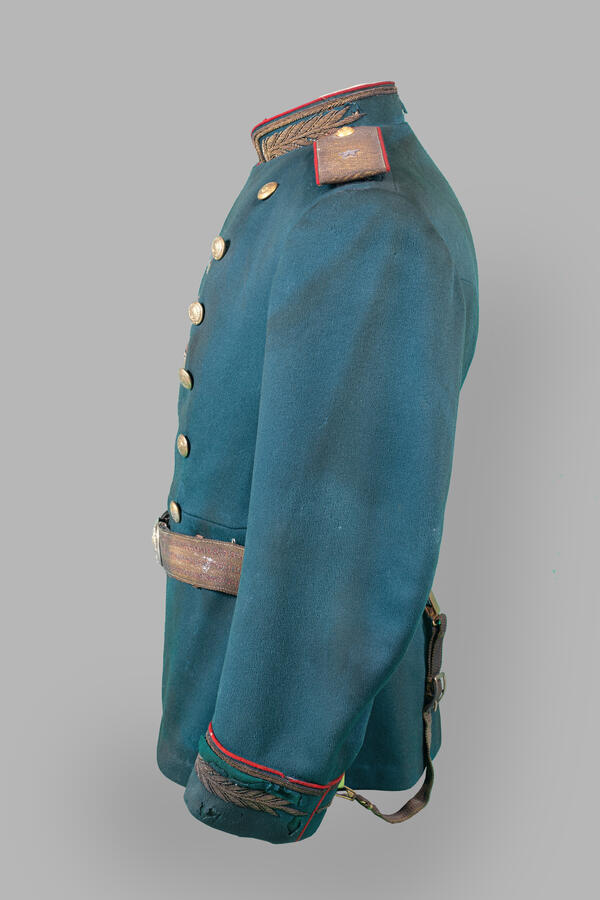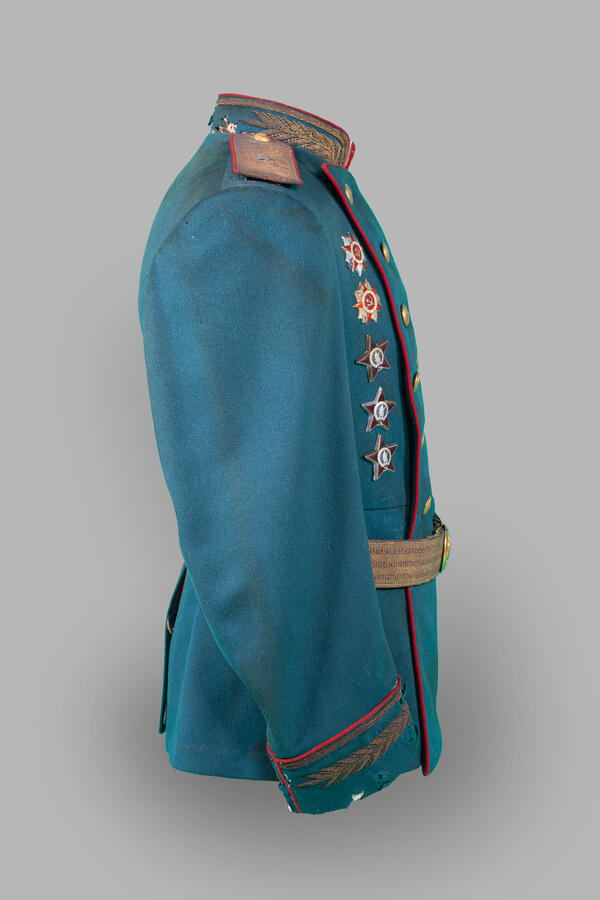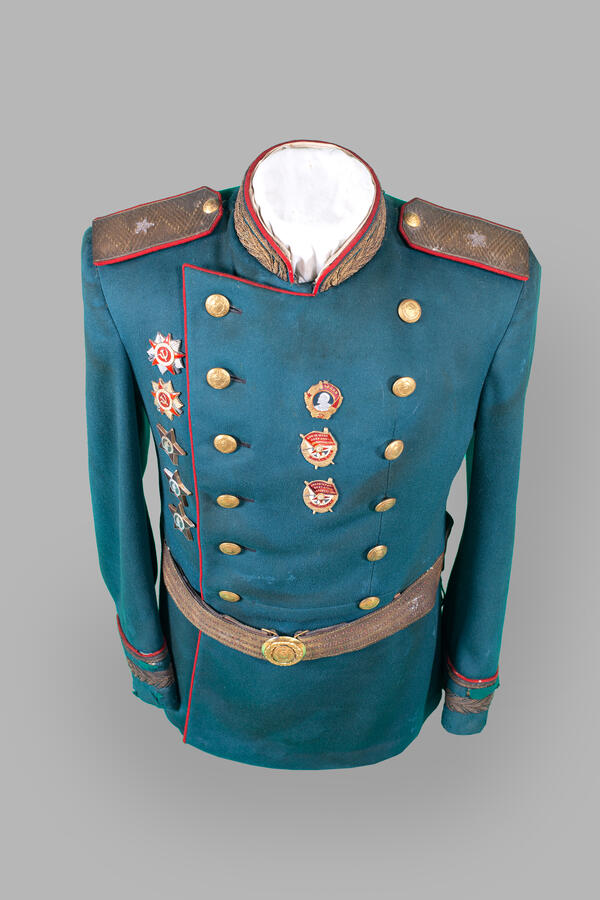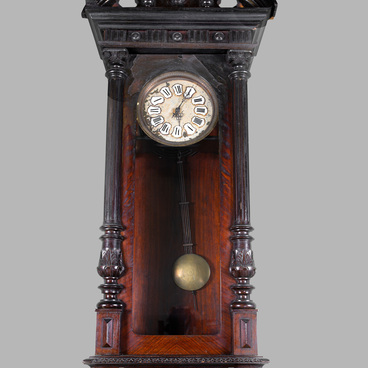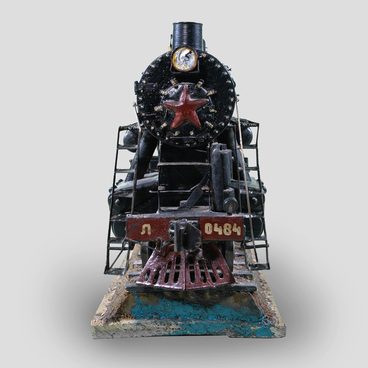In 1913, about 2,000 tsarist generals switched from full dress uniforms to practical and modern khaki uniforms. Infantry generals wore marching uniforms and dark green or blue breeches with a double red stripe.
The summer version of the uniform was sewn from lightweight fabric. The brown tunic had six yellow metal buttons with an eagle — sometimes they were replaced with horn buttons. The uniforms of artillery generals had buttons with crossed gun barrels. Camping uniforms always had chest and side pockets. The collar, cuffs and hard galloon shoulder marks had a scarlet trim.
During the First World War, khaki shoulder marks were introduced. Five-pointed stars on shoulder marks denoted the rank of general and the codes of his regiment. Before the revolution, the shoulder marks could feature a monogram of a member of the royal family if the general was with him as an adjutant.
In September 1914, officers were allowed to wear a tunic called “gymnastyorka” — a simple shirt-like blouse used by all Russian infantry. Soon the uniform of the “French” type, named after the British Field Marshal John French, came into use. The jacket had large pockets and was longer than the standard uniform.
After the 1917 revolution, the Red Army used the uniform of the Russian Imperial Army without the royal insignia. The general’s uniform from the collection of the Gromov Museum of Local Lore belonged to Mikhail Yakovlevich Balalaev. He was born into the family of a barge hauler in the village of Koshkarovo, Nizhny Novgorod Governorate. In the fall of 1914, 20-year-old Mikhail was drafted into the army, and he ended up in a reserve battalion of an infantry regiment.
Mikhail Balalaev participated in the Russian Civil War, fought against the army of Alexander Kolchak, took part in the suppression of the kulak uprisings of 1921 in Kurgan, Ishim, and Petropavlovsk. When Mikhail Balalaev was sent to the front as an instructor in small arms, he and his machine gun crew organized the abduction of a machine gun from the German trenches along with a machine gunner chained to it. For this, Balalaev received his first Cross of Saint George. The second award was given for the enemy aircraft he had downed.
During the Great Patriotic War, Major General Mikhail Balalaev carried out the tasks of Marshal Ivan Stepanovich Konev near Breslavl. For military work, Mikhail Yakovlevich was awarded many medals and eight orders, including the Order of Lenin.
The summer version of the uniform was sewn from lightweight fabric. The brown tunic had six yellow metal buttons with an eagle — sometimes they were replaced with horn buttons. The uniforms of artillery generals had buttons with crossed gun barrels. Camping uniforms always had chest and side pockets. The collar, cuffs and hard galloon shoulder marks had a scarlet trim.
During the First World War, khaki shoulder marks were introduced. Five-pointed stars on shoulder marks denoted the rank of general and the codes of his regiment. Before the revolution, the shoulder marks could feature a monogram of a member of the royal family if the general was with him as an adjutant.
In September 1914, officers were allowed to wear a tunic called “gymnastyorka” — a simple shirt-like blouse used by all Russian infantry. Soon the uniform of the “French” type, named after the British Field Marshal John French, came into use. The jacket had large pockets and was longer than the standard uniform.
After the 1917 revolution, the Red Army used the uniform of the Russian Imperial Army without the royal insignia. The general’s uniform from the collection of the Gromov Museum of Local Lore belonged to Mikhail Yakovlevich Balalaev. He was born into the family of a barge hauler in the village of Koshkarovo, Nizhny Novgorod Governorate. In the fall of 1914, 20-year-old Mikhail was drafted into the army, and he ended up in a reserve battalion of an infantry regiment.
Mikhail Balalaev participated in the Russian Civil War, fought against the army of Alexander Kolchak, took part in the suppression of the kulak uprisings of 1921 in Kurgan, Ishim, and Petropavlovsk. When Mikhail Balalaev was sent to the front as an instructor in small arms, he and his machine gun crew organized the abduction of a machine gun from the German trenches along with a machine gunner chained to it. For this, Balalaev received his first Cross of Saint George. The second award was given for the enemy aircraft he had downed.
During the Great Patriotic War, Major General Mikhail Balalaev carried out the tasks of Marshal Ivan Stepanovich Konev near Breslavl. For military work, Mikhail Yakovlevich was awarded many medals and eight orders, including the Order of Lenin.
